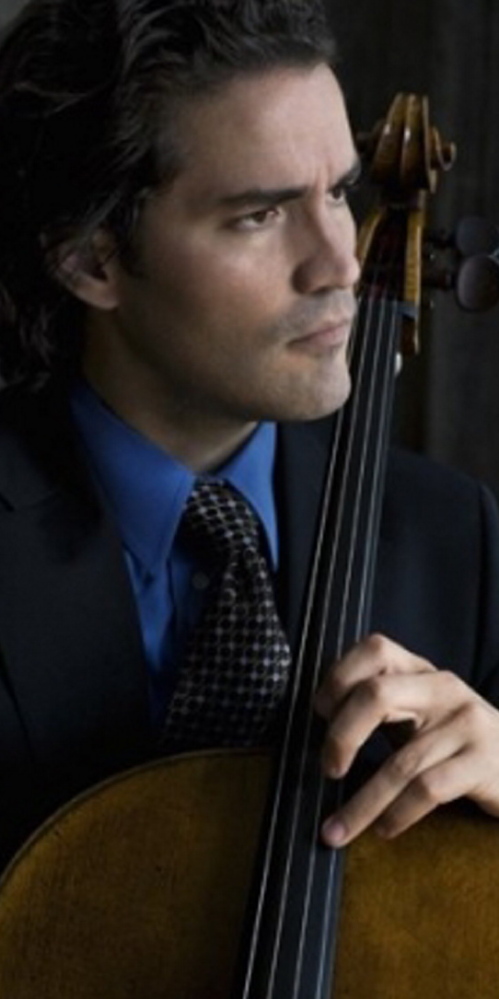If there is such a thing as surrealist music, Michael Gandolphi’s “Night Train to Perugia” would be the prime example. As played Tuesday night at Merrill Auditorium by the Portland Symphony Orchestra under Robert Moody, it proved that a composition need not be atonal to be avant garde.
Gandolpfi’s paean to quantum physics boasts Einstein’s train (from his popular explanation of relativity), Doppler effects, neutrino showers and displacement of time. It went away in a relative way and arrived the previous night, as the limerick has it. As a once-upon-a-time physics major, I loved it, and apparently so did the orchestra and a surprised audience.
Another voice from childhood, following a short Leonard Bernstein confection from “West Side Story,” was that masterpiece of orchestral color, Rimsky-Korsakov’s Capriccio Espagnol, Op. 34, a recording of which (by Fritz Reiner and the Chicago Symphony) I wore out many years ago.
The Portland Symphony Orchestra did a good job with a fantastically difficult score, with only a couple of passages that could have benefitted from greater clarity in the melodic line. Concertmaster Charles Dimmick’s solos were exceptional, and the final Fandango asturiano was excitement personified.
The performance was a telling example of the importance of live music, since many of the Capriccio’s subtle effects are almost impossible to capture on a recording.
After intermission, cellist Zuill Bailey and violist Laurie Kennedy starred in a charming rendition of Richard Strauss’ tone poem “Don Quixote” (TrV 184, Op. 35).
“Don Quixote” differs from other Strauss tone poems, such as “Ein Heldenleben,” in being a series of vignettes – variations on a theme – rather than a developing saga. Bailey’s virtuosity consisted in capturing the Don’s quicksilver moods, rather than in technical display. The viola, as Sancho Panza, accompanies and comments on their adventures.
In “Don Quixote,” Strauss seems most interested in how well music can depict action, while also giving free rein to his sense of humor. The scene in which Don Quixote attacks a flock of sheep is brilliant. Bailey and the orchestra collaborated perfectly in the striking contrast between the Don’s imaginary battle and the realistic bleating of his victims.
The most moving section of the piece is its ending, when all the musical threads come together and our hero, his sanity restored, contemplates his follies and dies. Bailey’s slumping over the cello, after depicting the flight of the Don’s soul to heaven, was a great piece of theater.
In spite of the relatively low key of the work – virtuoso cello concertos are a rare breed – the audience gave Bailey, Kennedy and the orchestra a well-deserved standing ovation.
Christopher Hyde’s Classical Beat column appears in the Maine Sunday Telegram. Contact him at:
classbeat @netscape.net
Send questions/comments to the editors.



Success. Please wait for the page to reload. If the page does not reload within 5 seconds, please refresh the page.
Enter your email and password to access comments.
Hi, to comment on stories you must . This profile is in addition to your subscription and website login.
Already have a commenting profile? .
Invalid username/password.
Please check your email to confirm and complete your registration.
Only subscribers are eligible to post comments. Please subscribe or login first for digital access. Here’s why.
Use the form below to reset your password. When you've submitted your account email, we will send an email with a reset code.